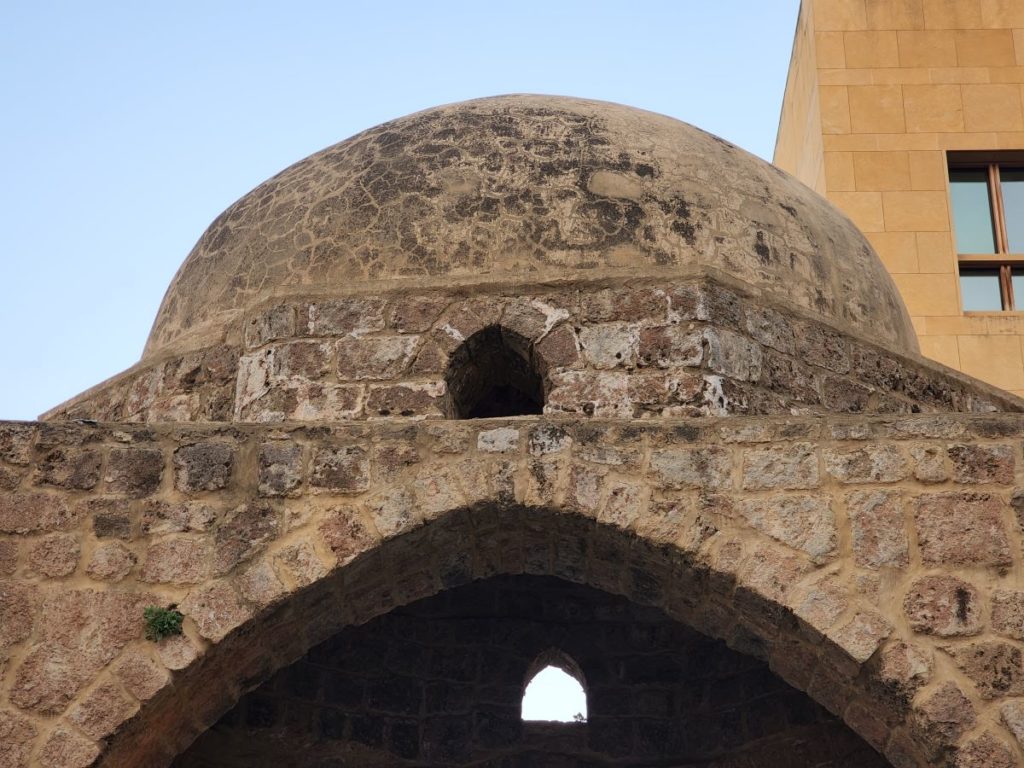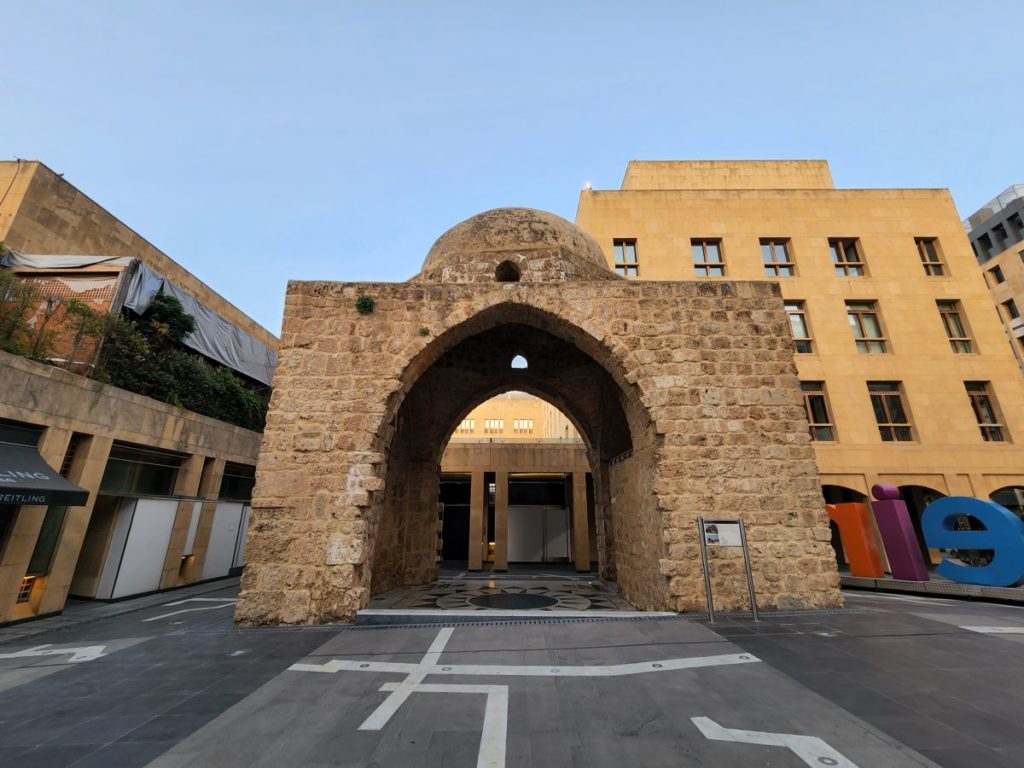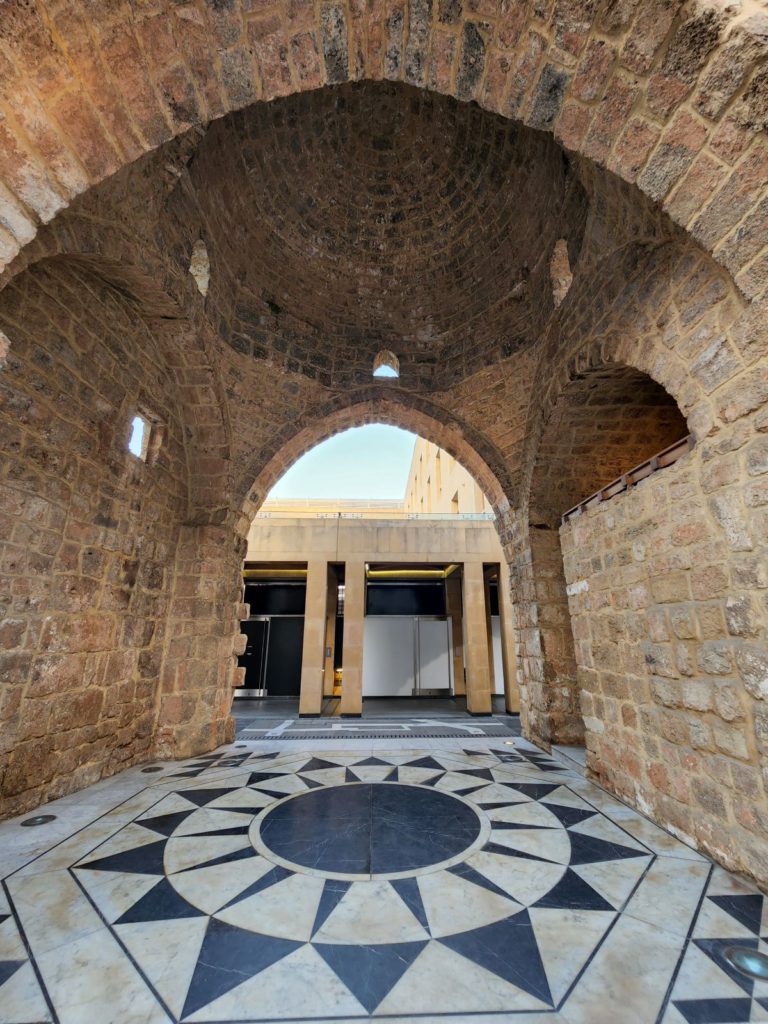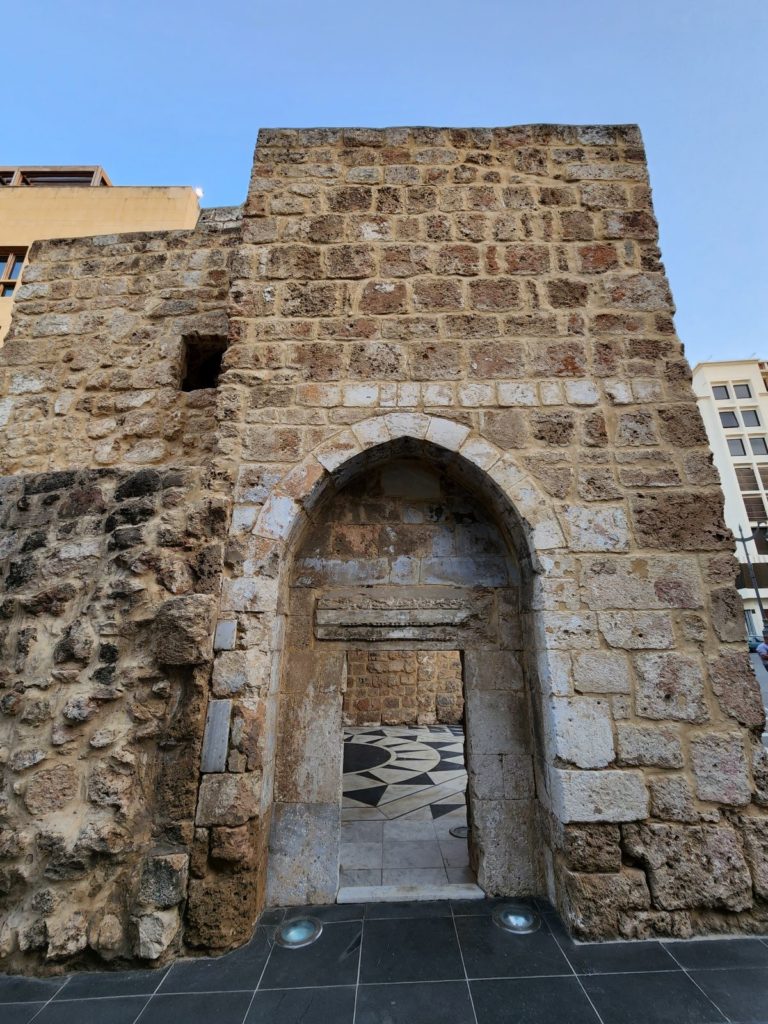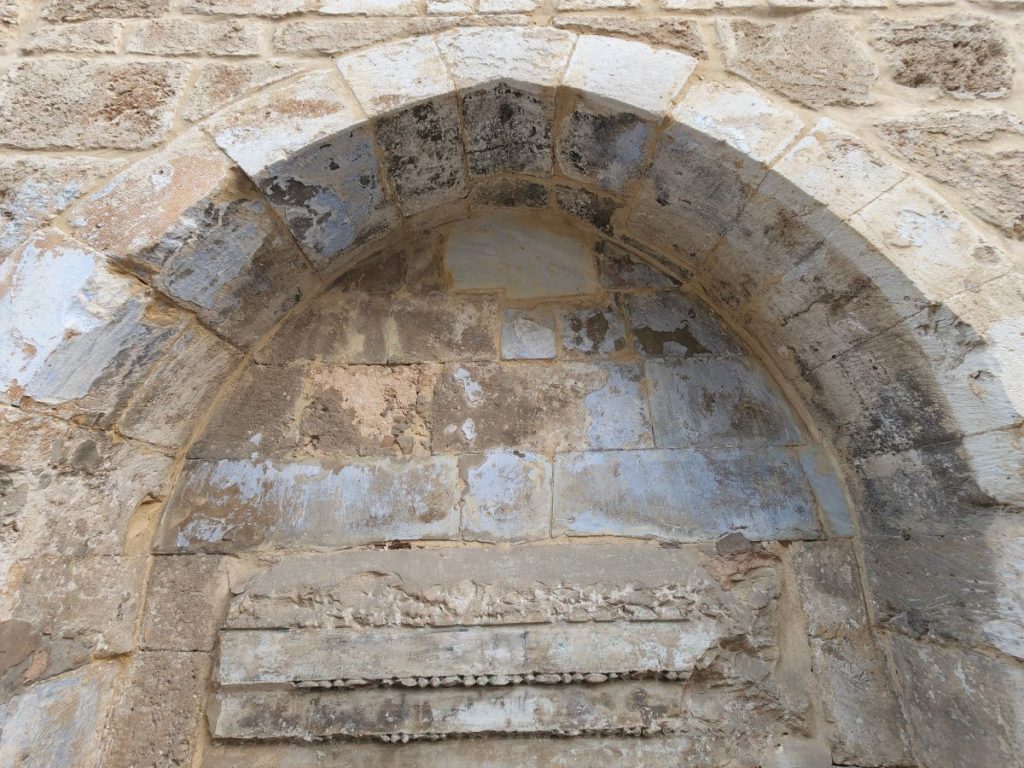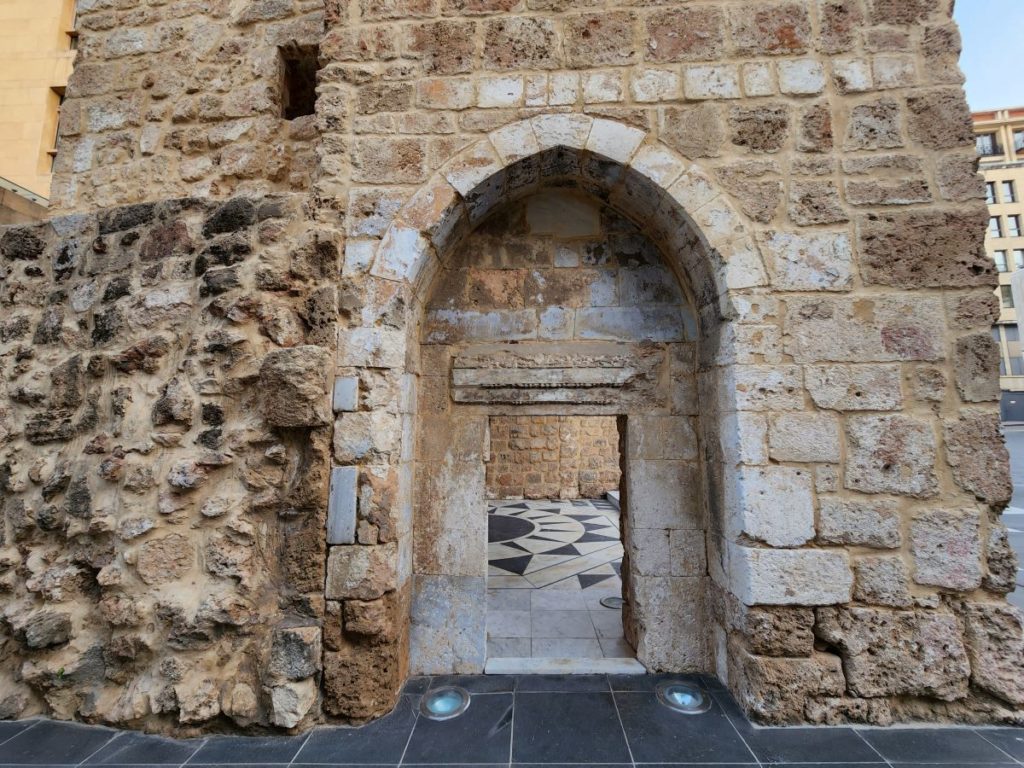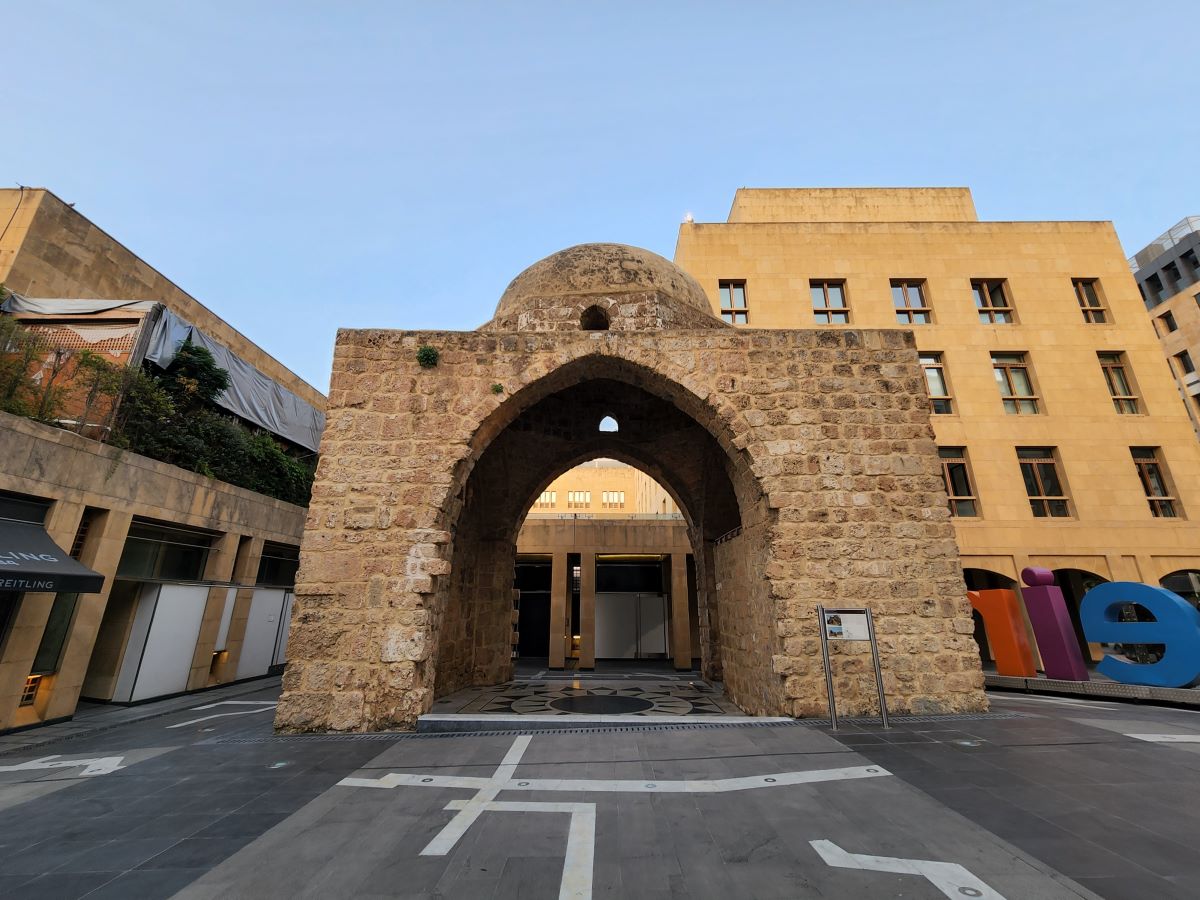The solitary surviving Mamluk-era structure in Beirut, referred to as “Zawiat Ibn Arraq al Dimashqi,” stands at the entrance of the newly established souks in Downtown Beirut.
Ibn Arraq al Dimashqi
Ibn Arraq al Dimashqi, a Sufi scholar, was born into wealth and later embraced Sufism under Shaykh Ibrahim al-Naji, after which he devoted his life to studying tafsir (scriptural interpretation), Hadith, and Fiqh (Islamic jurisprudence). Iban Arraq’s last visit to Beirut was recorded in 1517, where he built a house for his family and established a ribat (zawia) for Sufi study outside the city’s bustling areas. He passed away in Mecca in 1526.
Structure
The structure has undergone significant architectural changes over time. Initially serving as a Zawia, the remaining dome chamber might have been part of or connected to a vaulted iwan. During Ottoman rule, it became a burial site for governors. Despite alterations, Sufi practices persisted. In the late 19th century, it became a religious school, teaching Quran, traditions, Arabic, and arithmetic.
By the early 20th century, it transitioned into shops. In 1963, most of the zawiya became a shop managed by the Baylaryan family. Later reports indicated the presence of three shops, with the burial area behind them.
Finally, amidst the demolition of the souks in downtown Beirut as part of the reconstruction phase in the early 1990s’, the Zawia emerged among the damaged structures. It was transformed into a temporary Shiite shrine, igniting a contentious debate with Sunnis. Ultimately, the shrine was entrusted to a delegation from the General Directorate for the Islamic Waqfs of Dar al-Fatwa. Under this authority, a committee of experts was assembled to oversee its restoration and management.
Karim Sokhn
Tour Operator & Tour Guide
References:
Weaving Historical Narratives: Beirut’s Last Mamluk Monument, Houwayda Al-Harithy



